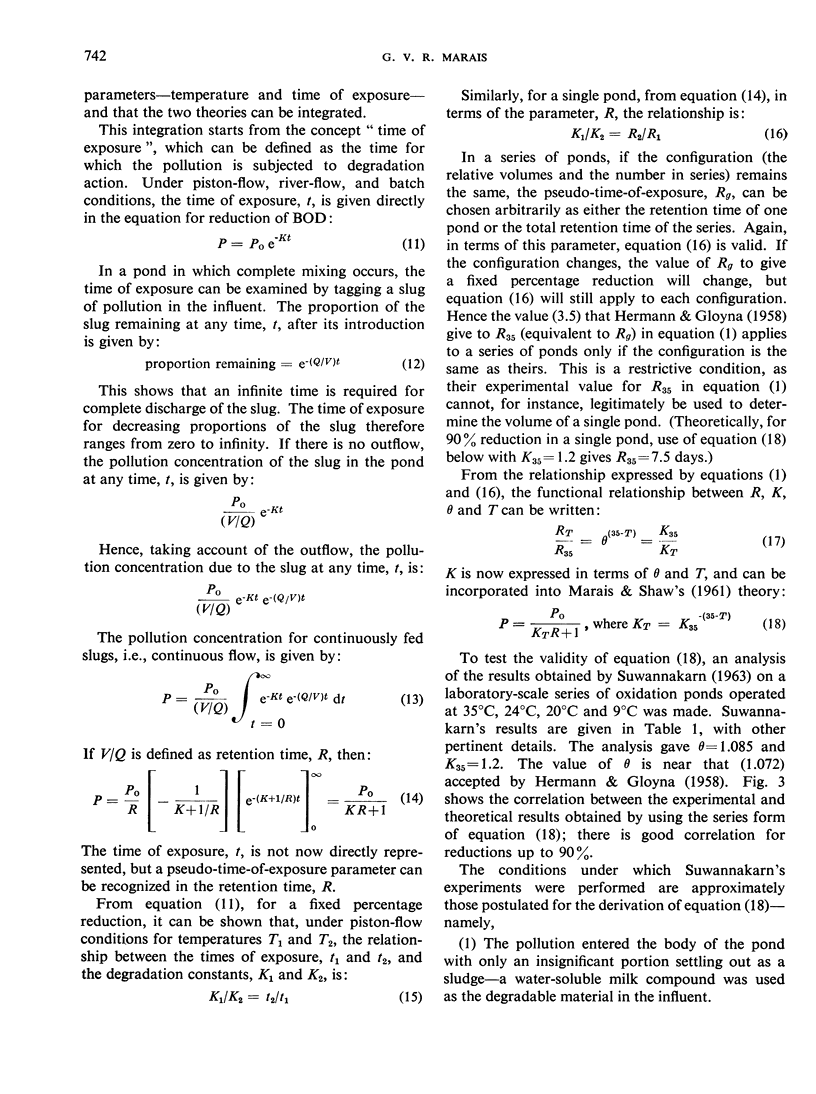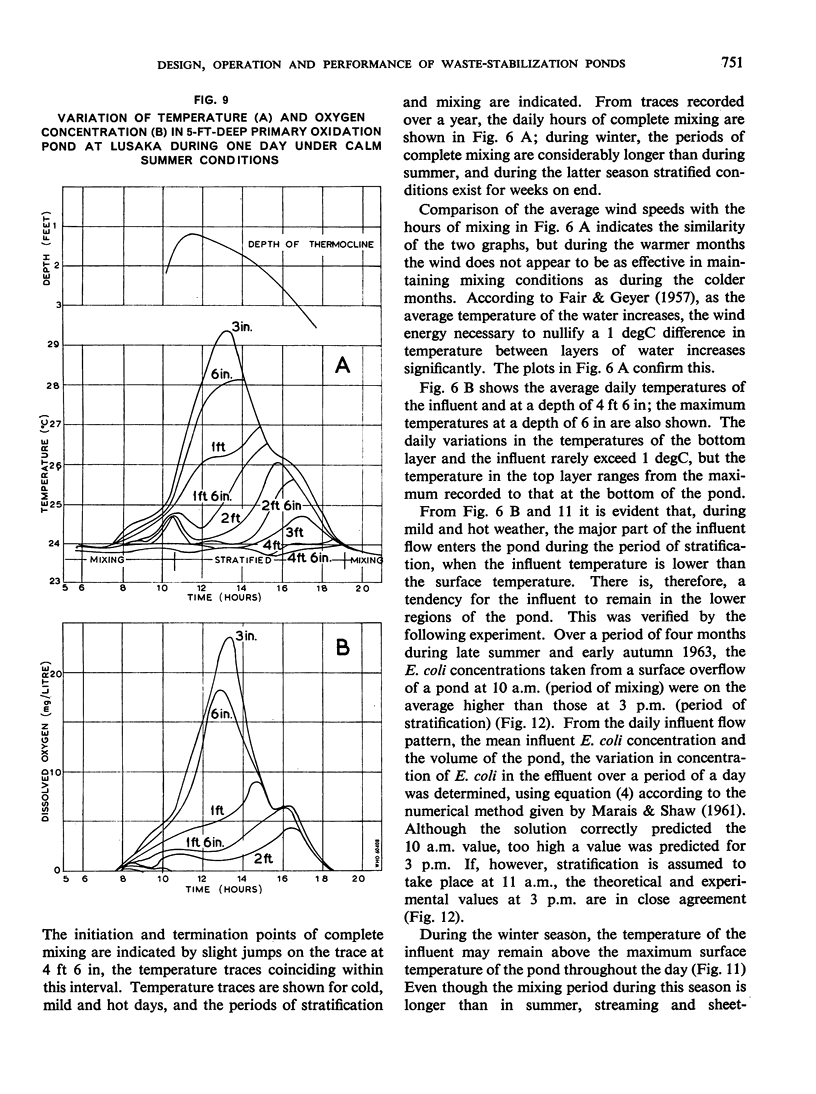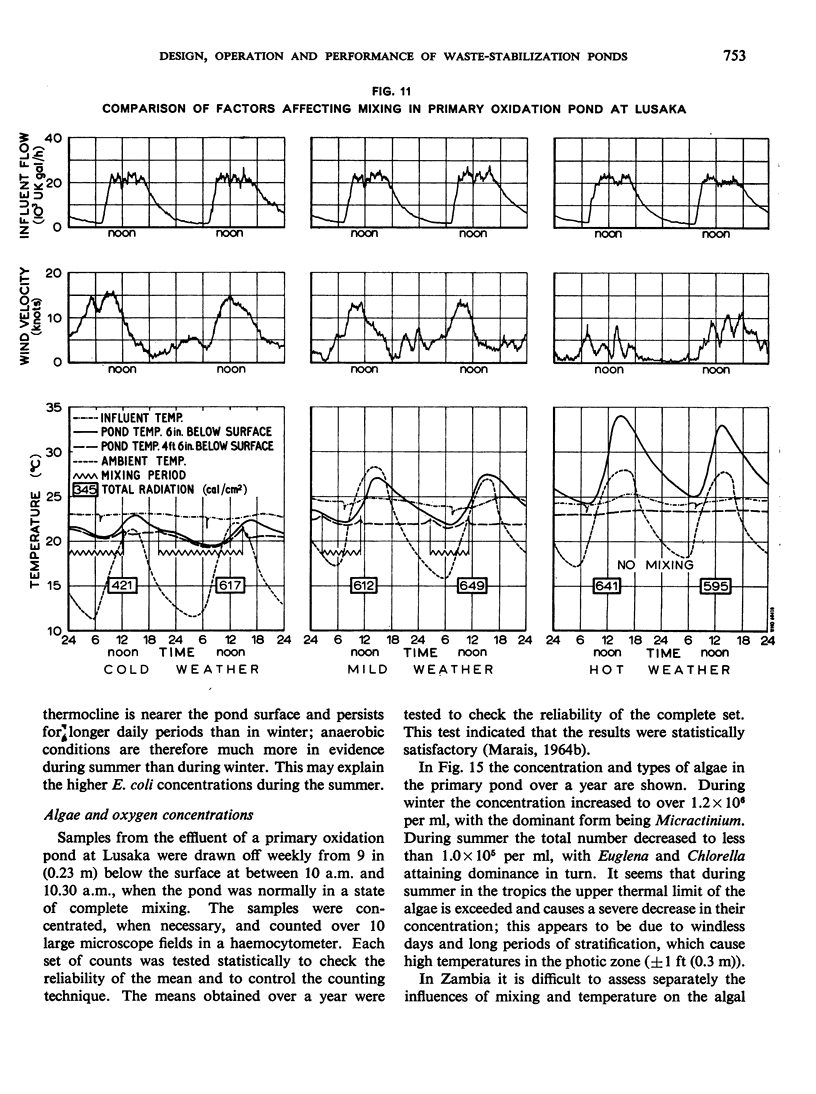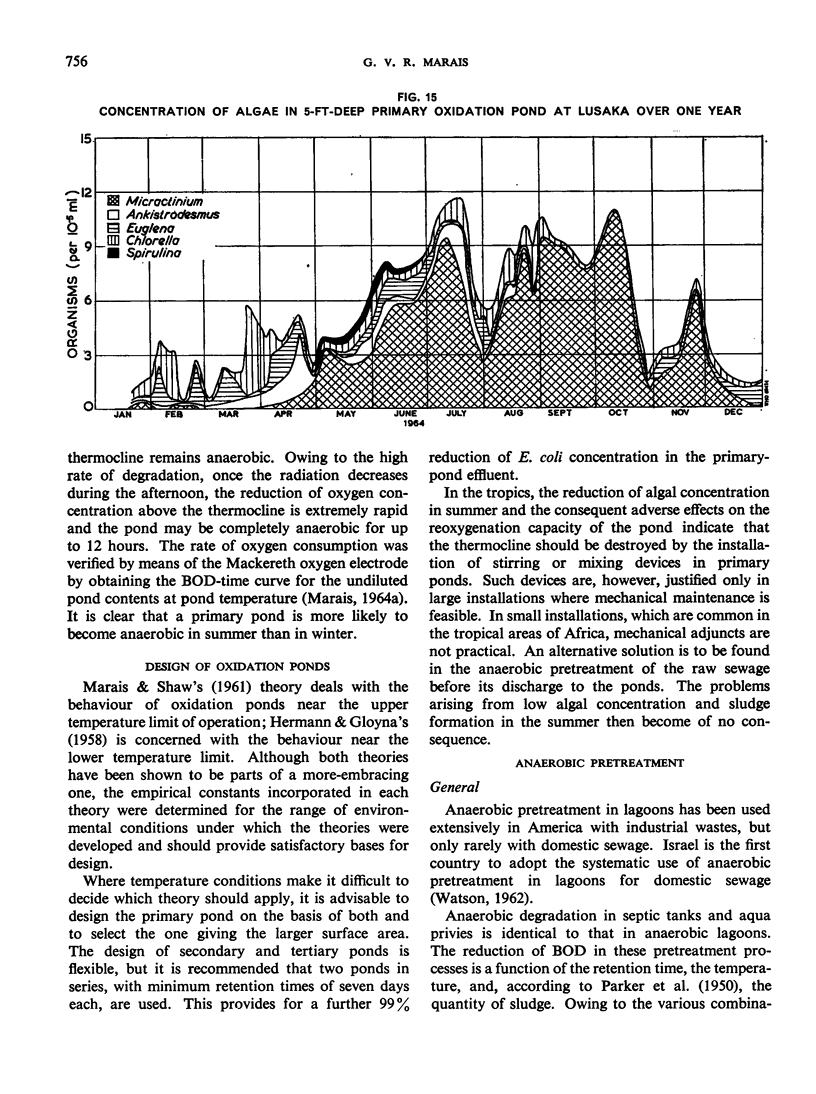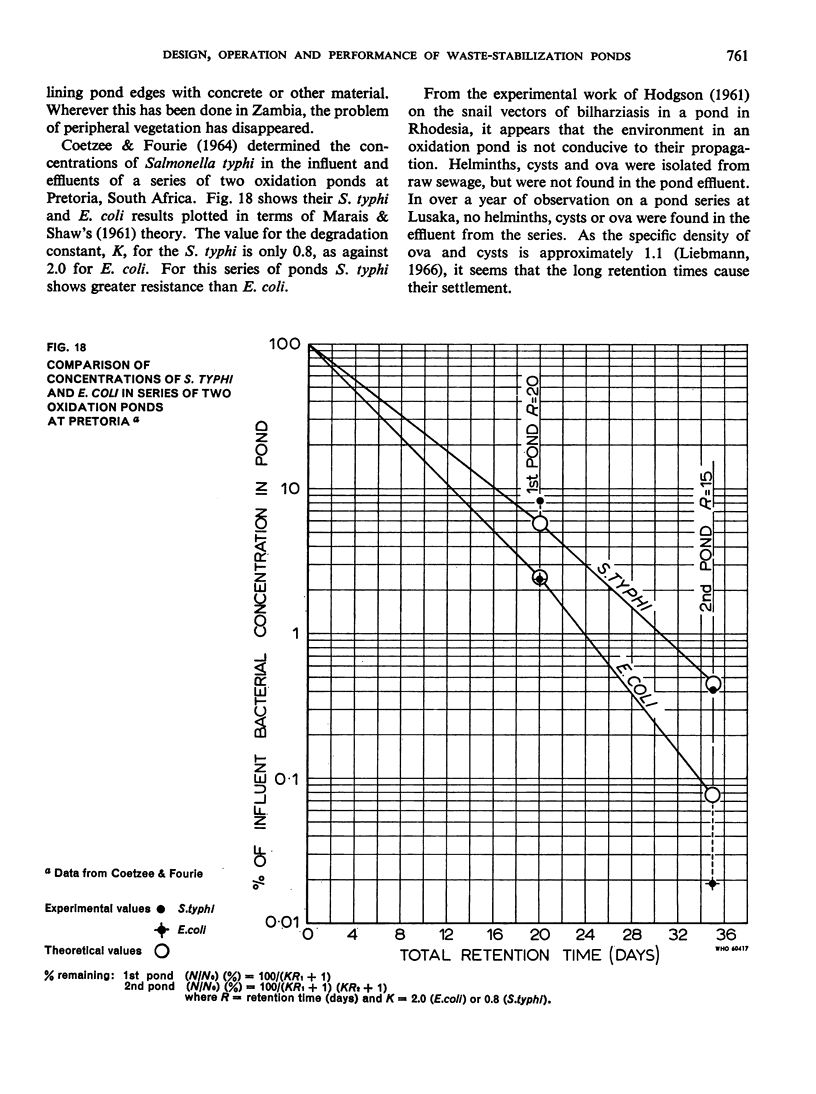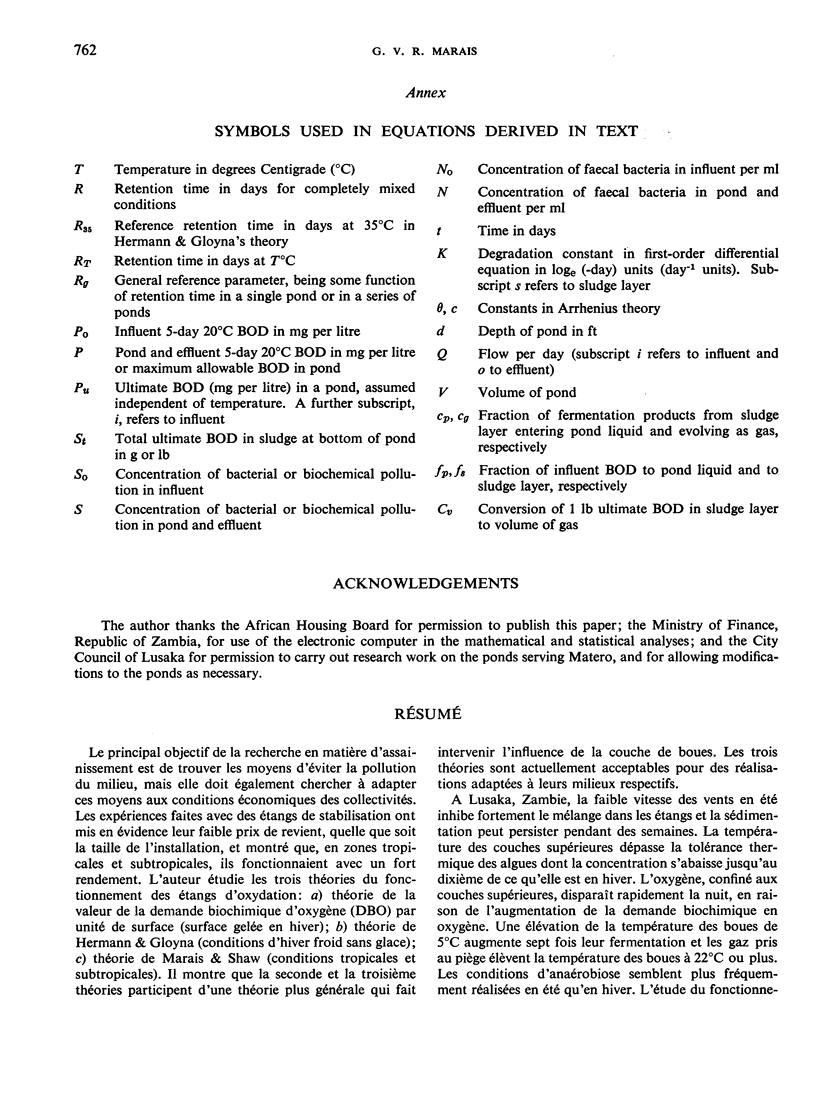Abstract
In the developing countries, the unit costs of waste-stabilization ponds are generally low. Moreover, in the tropics and subtropics, the environmental conditions are conducive to a high level of pond performance. In view of this, the theory, operation and performance of such ponds under these conditions have been studied.
It is shown that the Hermann & Gloyna and Marais & Shaw theories of the degradation action in oxidation ponds can be integrated, and that account can be taken of the effect of the sludge layer. In Lusaka, Zambia, anaerobic conditions are much more likely to occur in summer than in winter, because of intense stratification. It is confirmed that a series of maturation or oxidation ponds is more efficient than a single pond of equivalent volume.
When aqua privies and septic tanks are used as anaerobic pretreatment units, the area of the primary oxidation ponds can be reduced and there is less likelihood that anaerobic conditions will develop in them in summer. The use of self-topping aqua privies, discharging through sewers to oxidation ponds, has made possible the economic installation of water-carriage systems of waste disposal in low-cost high-density housing areas.
In the oxidation ponds, typhoid bacteria appear to be more resistant than indicator organisms; helminths, cysts and ova settle out; there are no snails and, if peripheral vegetation is removed, mosquitos will not breed.
Full text
PDF




